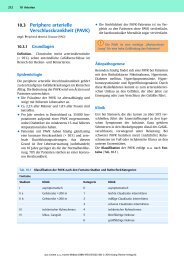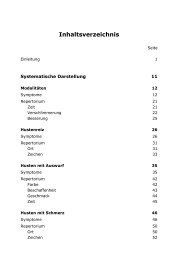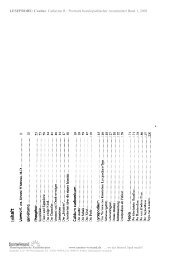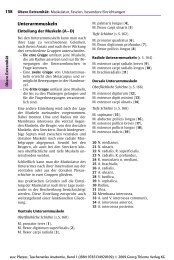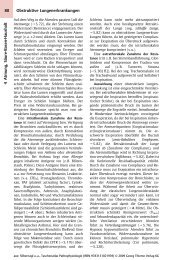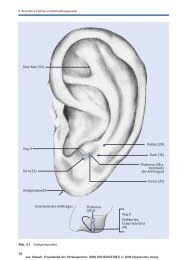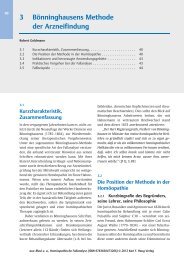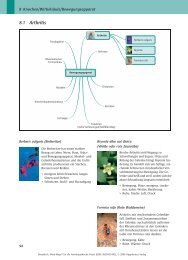alphabetical index of plant families and groups - Sunrise Versand
alphabetical index of plant families and groups - Sunrise Versand
alphabetical index of plant families and groups - Sunrise Versand
You also want an ePaper? Increase the reach of your titles
YUMPU automatically turns print PDFs into web optimized ePapers that Google loves.
Medicinal Uses<br />
‘Devil’s club is probably the most important spiritual <strong>and</strong> medicinal <strong>plant</strong> to most<br />
indigenous peoples who live within its range. Different parts <strong>of</strong> this <strong>plant</strong> are<br />
used by over 38 linguistic <strong>groups</strong> for over 34 categories <strong>of</strong> physical ailment, as<br />
well as many spiritual applications. . . . Phytochemical research has revealed that<br />
this <strong>plant</strong> has antifungal, antiviral, antibacterial <strong>and</strong> anti-mycobacterial properties,<br />
<strong>and</strong> these are undoubtedly related to its widespread use in traditional<br />
medicine.<br />
‘. . . Among all <strong>of</strong> the traditional medicinal uses <strong>of</strong> devil’s club, its most widespread<br />
is for the treatment <strong>of</strong> external <strong>and</strong> internal infections, including tuberculosis.<br />
The efficacy <strong>of</strong> many <strong>of</strong> the treatments is undoubtedly related to devil’s<br />
club’s significant antibacterial, anti-mycobacterial being active against bacteria in<br />
the genus Mycobacterium, antifungal <strong>and</strong> antiviral properties. Devil’s club is also<br />
commonly used by many cultural <strong>groups</strong> to treat arthritis, rheumatism, respiratory<br />
ailments <strong>and</strong> as an emetic <strong>and</strong> purgative. It is also used as an aid in childbirth,<br />
post-partum, for internal haemorrhaging, as an analgesic, to treat stomach<br />
<strong>and</strong> digestive tract ailments, broken bones, fever, d<strong>and</strong>ruff, lice, headaches <strong>and</strong><br />
as a treatment for cancer. Several parts <strong>of</strong> the shrub, including inner bark, inner<br />
bark ash, whole stems, roots, berries <strong>and</strong> leaves, are used in a variety <strong>of</strong> ways to<br />
effect these treatments. However, the most common type <strong>of</strong> preparation is as an<br />
infusion or decoction <strong>of</strong> the stem inner bark.<br />
‘. . . Western herbalists report that the roots <strong>of</strong> devil’s club <strong>and</strong> to a lesser extent<br />
the inner stem bark are a strong respiratory stimulant <strong>and</strong> expectorant <strong>and</strong><br />
recommend their use for rheumatoid arthritis <strong>and</strong> other autoimmune conditions,<br />
as well as to treat eczema, sores <strong>and</strong> a number <strong>of</strong> internal <strong>and</strong> external infections.<br />
Devil’s club is also commonly recommended for the treatment <strong>of</strong> type II adult<br />
onset diabetes, a use <strong>of</strong> devil’s club that is also extensive in indigenous communities.<br />
. . . Since devil’s club is still widely <strong>and</strong> increasingly, used as a treatment for<br />
late onset type II diabetes <strong>and</strong> is listed in a recent review <strong>of</strong> anti-diabetic <strong>plant</strong>s,<br />
additional research <strong>and</strong> more rigorous clinical trials are required to validate <strong>and</strong><br />
characterise or to disprove hypoglycaemic properties in devil’s club.’ [Lantz 2004]<br />
Spiritual Uses<br />
‘In addition to ethnographic accounts <strong>of</strong> medicinal uses, there are also numerous<br />
sources that describe spiritual applications <strong>of</strong> devil’s club. These include purification<br />
<strong>and</strong> cleansing; protection against supernatural entities, epidemics <strong>and</strong> evil<br />
influences; acquisition <strong>of</strong> luck; to combat witchcraft; as ceremonial <strong>and</strong> protective<br />
face paint; <strong>and</strong> in rituals by shamans <strong>and</strong> others to attain supernatural<br />
powers.<br />
‘Two <strong>of</strong> the most widespread spiritual uses are bathing with a devil’s club inner<br />
bark solution for personal protection <strong>and</strong> purification, <strong>and</strong> its use, particularly<br />
the spiny or de-spined aerial stems, as an amulet for protection against a variety<br />
<strong>of</strong> external influences. External <strong>and</strong> internal cleansing involving the use <strong>of</strong> devil’s<br />
club was, <strong>and</strong> is, <strong>of</strong> paramount importance to many <strong>of</strong> the cultural <strong>groups</strong><br />
throughout devil’s club’s range. The inner stem bark <strong>of</strong> devil’s club has also <strong>of</strong>ten<br />
been used in solution to wash down fishing boats, fishnets <strong>and</strong> to purify a house<br />
© Saltire Books Ltd<br />
Family ARALIACEAE 511



